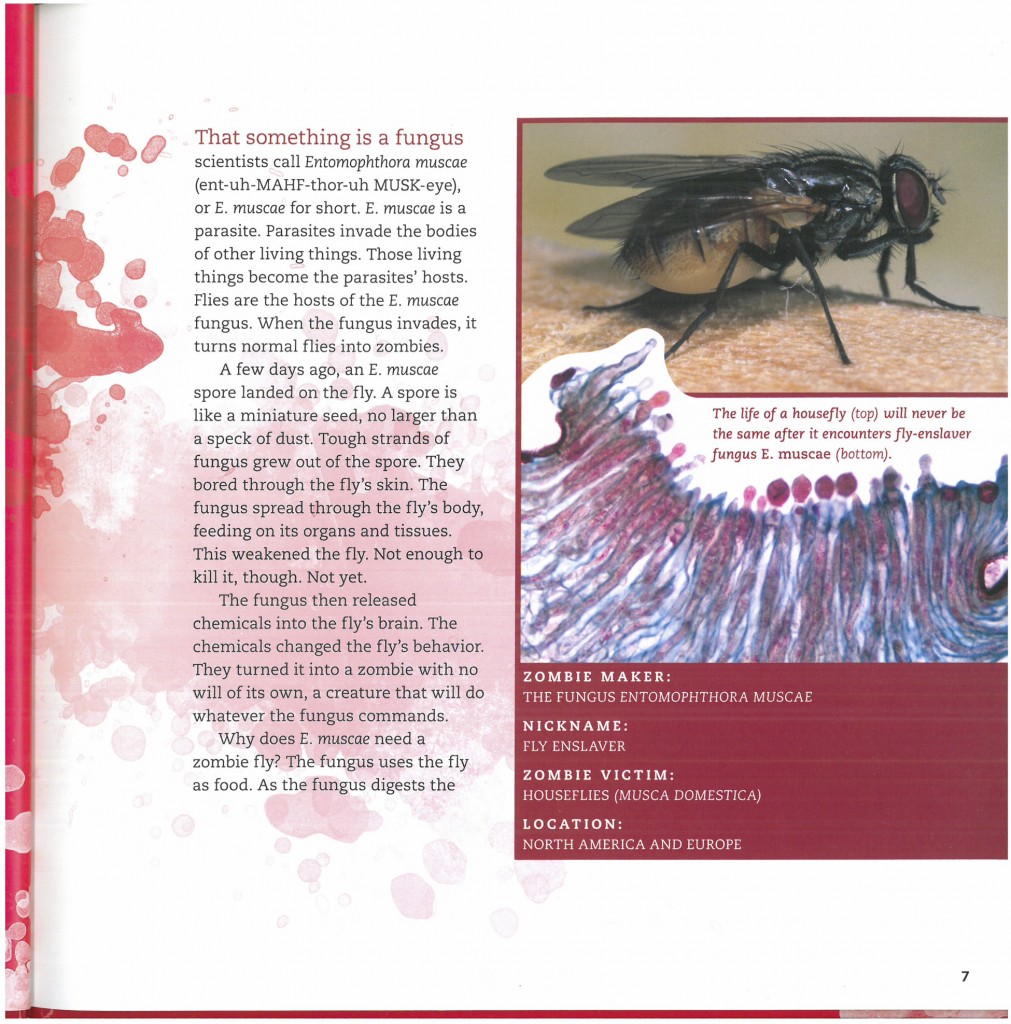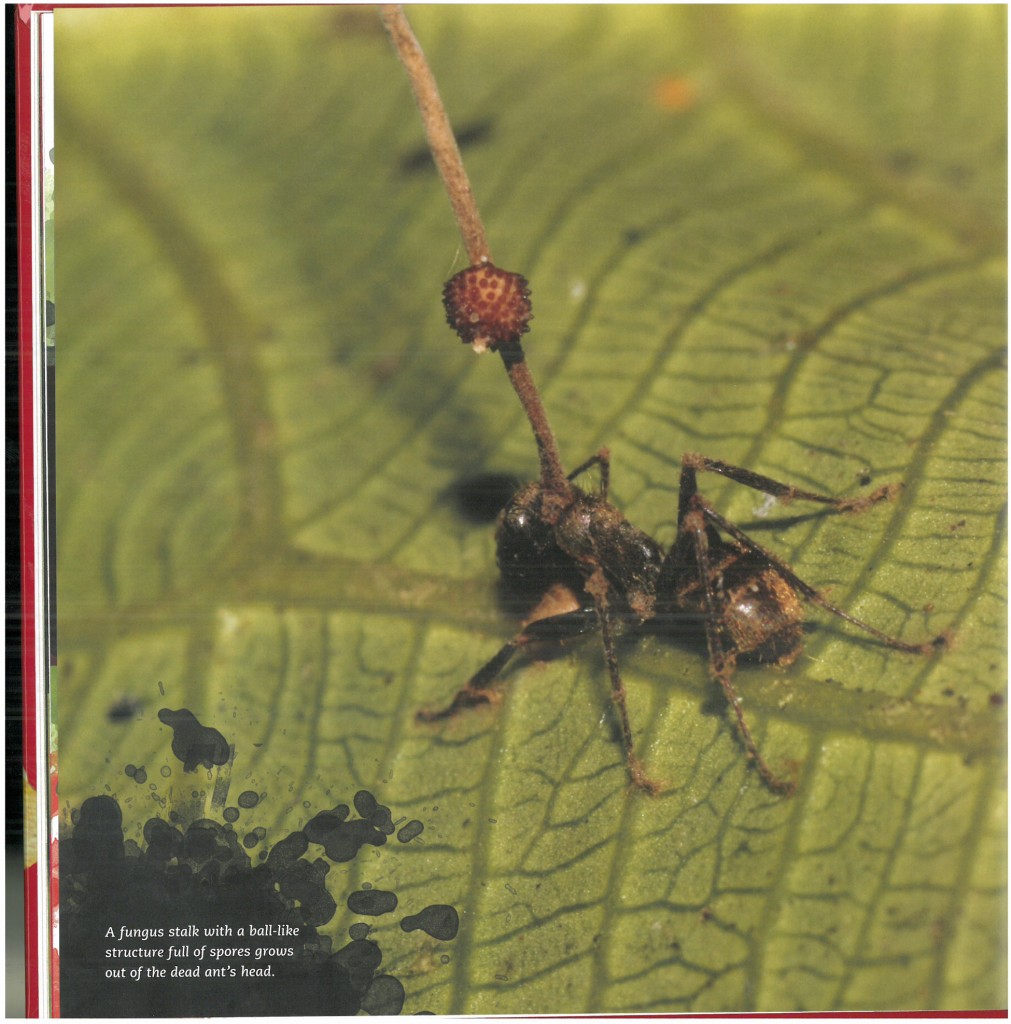
I found a lot of good books at the NCTE14, some teacher books for me, but some kid books, too. I went with a focus –informational text — and I came away with some good ones. For read aloud today, I started one from the stack, Zombie Makers: True Stories of Nature’s Undead by Rebecca Johnson. I’ve read the first chapter to the kids so far. The children were fascinated, repulsed, enlightened, and intrigued.
I think those are good reactions to a book about parasites that literally take over the brains and bodies of their hosts. The book builds its chapters around “traits” of zombies. For example, chapter one explores Zombie Trait #1: Stares vacantly ahead. Moves slowly and mechanically. Behaves oddly. Using scientific research about the fungus E. muscae, Johnson describes how spores of the fungus drop on a fly. The fungus quickly grows its mycelia (the tough vegetative “root-like” structures of a fungus) deep into the fly’s insides. The roots release chemicals that basically take over the fly’s brain, causing it to climb mechanically to the top of the nearest grass. There the fungus expands into the fly’s abdomen, distending it and killing the fly.

Soon after that, the fruiting bodies of the fungus burst through the fly’s exoskeleton to release more spores. The process starts over again.
In chapter one we learn more about fungus attacks on carpenter ants, with similar results.

Chapter two moves away from the realm of fungus and into the world of worms, one of which uses crickets as a host. The end result is a bad one for the cricket — it is forced to dive into the nearest water to drown — but fantastic for the worm: it is able to complete its life cycle. Oh, did I mention that the worm that finally comes out of the cricket is up to three feet long? That’s a lot of worm to fit into a cricket!

I loved this book for several reasons. First, who wouldn’t like a book that describes such gruesome real-life events? Also, the writing is crisp and clear, and the photographs are stunning; they really help the reader visualize what is happening inside the body of the host. I mean, it’s one thing to describe the distended abdomen of a fly, it’s quite another to see what that looks like in a photograph. Exquisite.
Each chapter has a segment that describes the science, and the scientists, who made these discoveries. From these short segments, you get a real sense of how scientists do their work, how they ask their questions, under what field conditions they make their observations, and what drives them to do what they do.
Finally, I love how these creatures are all so humble. No tigers, rhinos, whales, or wolves in this book. Instead, we find the lowly creatures of the world — the fungus, ants, crickets, and worms that live under our feet and beneath our attention. How cool is it that this unnoticed world is so filled with drama, strange behavior, and bizarre moral codes?
If you aren’t too squeamish to read it, I’ll bet your kids would love this book read out loud to them. If you are a bit too squeamish, get it anyway and set it out somewhere in plain sight. There’s someone in your class who wants to read it. I know it.
Are you feeling a compulsion to buy this book, maybe one you might not have bought otherwise? I thought so. Good. It’s working…
